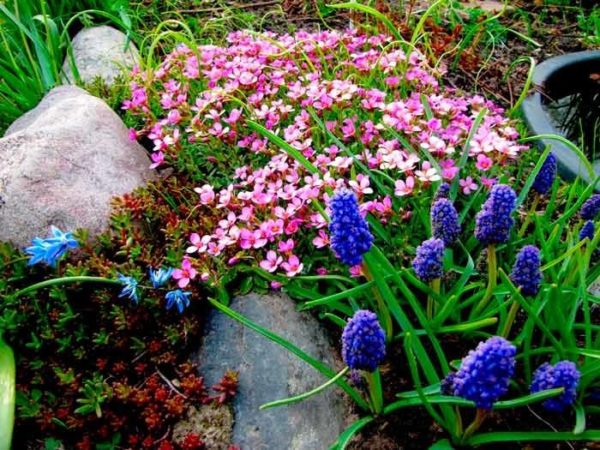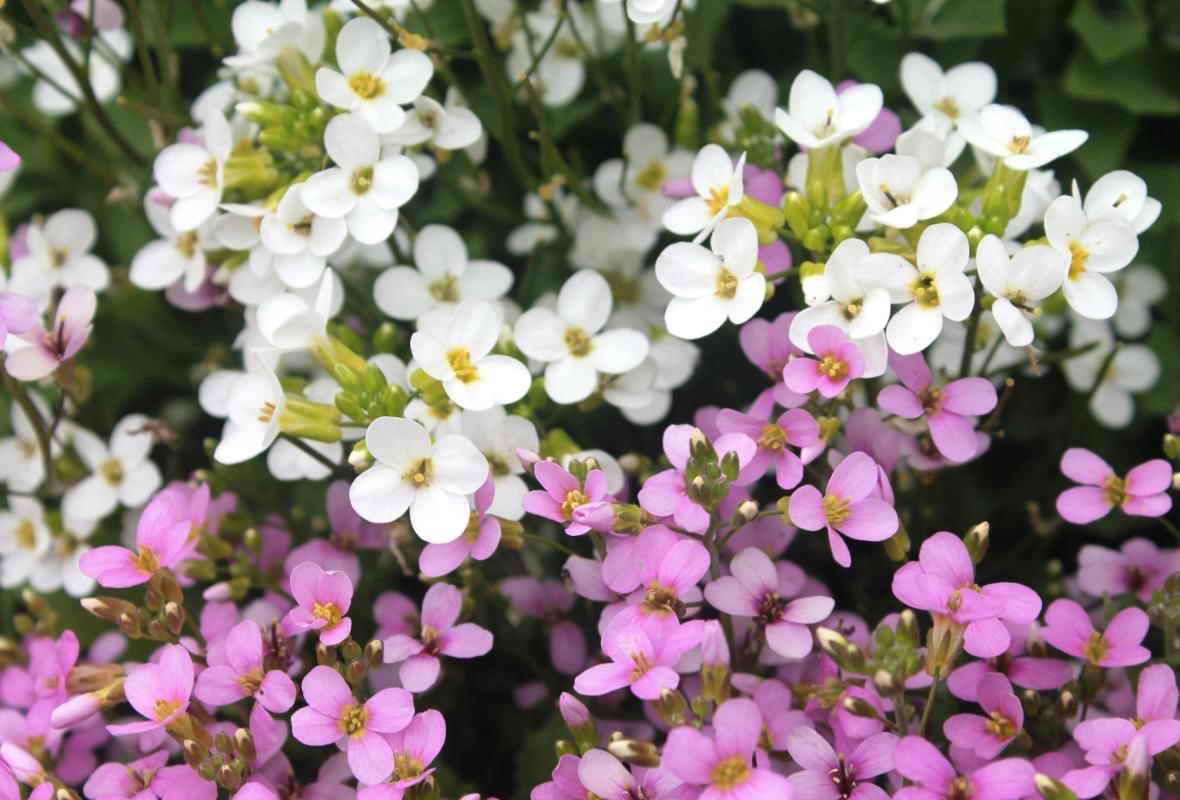Arabis, or as it is also called, rezukha is a beautiful perennial plant, literally dotted with small flowers. Already in the second year, Arabis is perennial, which does not require special skills for planting and caring for it, will please gardeners with an abundance of greenery and beautiful flowering.
As you can see from the photo, arabis flowers are mostly snow-white, purple or pink.
Content
Types of Arabis
Perennial arabis has several species, planting and care for which in the suburbs are practically the same, so we will not consider each variety separately.
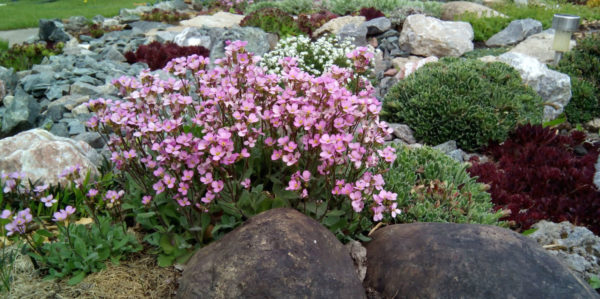
Their main difference, as you can see from the photo, is in appearance.
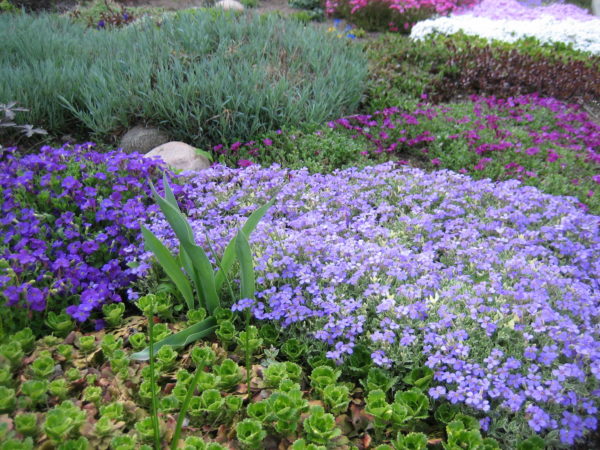
Here are some of the most common varieties of arabis:
- Alpine;
- bruise;
- running out;
- Caucasian;
- ciliary leaf.
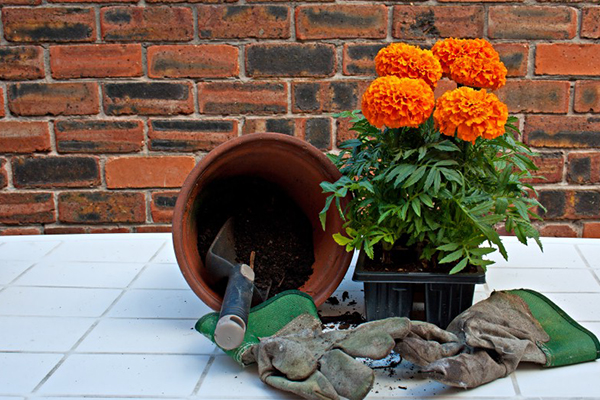 You may be interested in:
You may be interested in:Preparing the landing site
Landing and caring for perennial Caucasian arabis (photos are presented below) begin with choosing a suitable place.
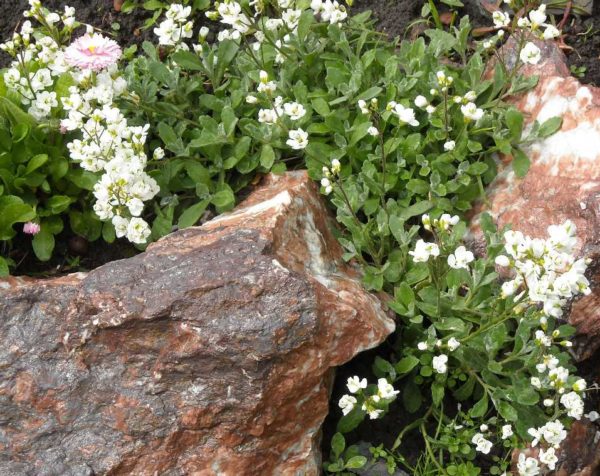 It is advisable to find a place on a hill, since there will definitely not be stagnation of water, because of which the roots of the cocks can rot. It will also be a big plus if the soil is acidic and rich in nutrients. But, again, we note that even in adverse conditions, arabis will delight you with beautiful flowering.
It is advisable to find a place on a hill, since there will definitely not be stagnation of water, because of which the roots of the cocks can rot. It will also be a big plus if the soil is acidic and rich in nutrients. But, again, we note that even in adverse conditions, arabis will delight you with beautiful flowering.
When a suitable place is found, you can begin to prepare the soil. First of all, you need to dig out the roots of perennial weeds from the soil, as they can interfere with the growth of arabis. Immediately before planting the cocks in the holes, add sand, gravel, chalk or dolomite flour. Another important point: the holes should be at least 30 cm apart.
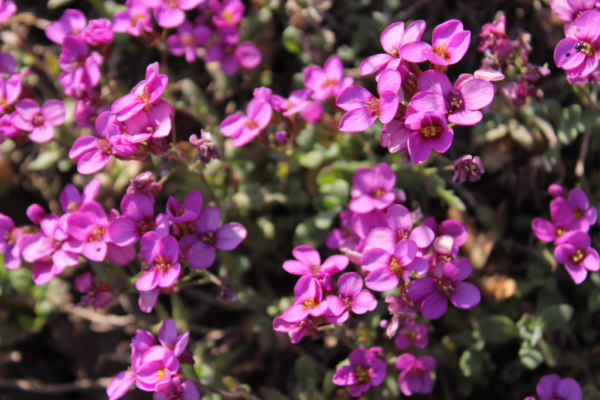
If you still planted arabis in the place where the water stagnates, then be sure to do a drainage.
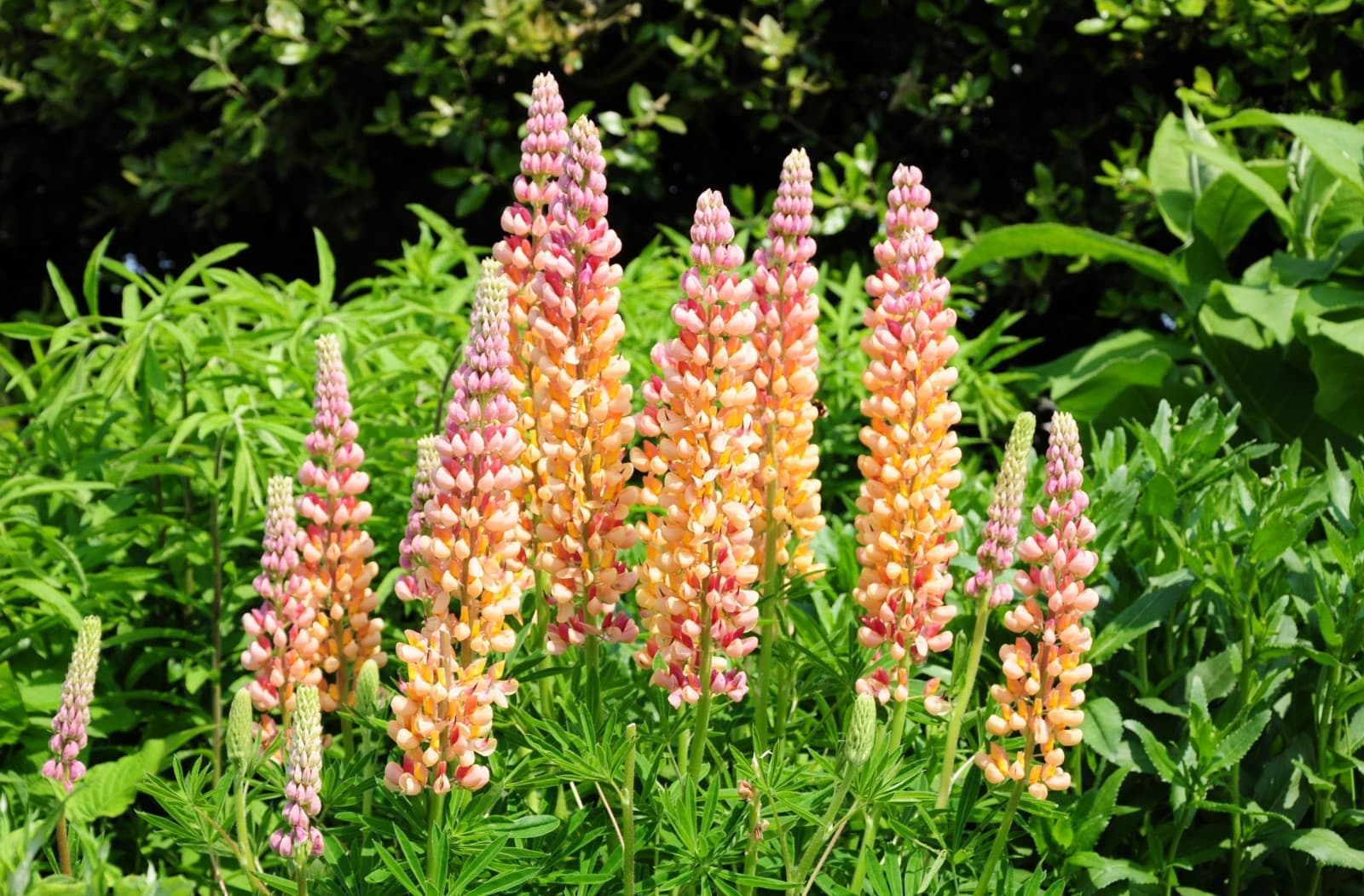 You may be interested in:
You may be interested in:Watering and feeding
There is also nothing complicated. The regularity of irrigation of arabis depends on the weather: in hot and dry weather, it is worth watering a reek much more often than in cloudy and rainy weather. During the growing season, arabis is also watered as necessary.
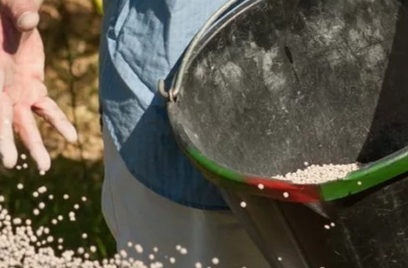
As for top dressing, fertilizing is enough 1 time per year (in spring). As top dressing, you can use humus or compost. Before flowering, the plant can also be fed with complex mineral fertilizers.
Pruning and wintering arabis
Often, the casing is planted so that during flowering it creates full-fledged compositions. In order for everything to turn out as you intended, in the flowering process, arabis must be cut periodically.
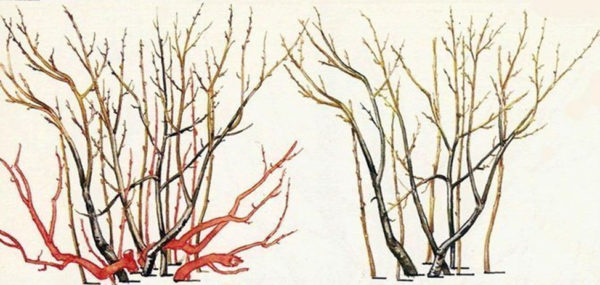
Basically, so that arabis does not violate the intended boundaries, long shoots are nipped at the flower.And also note that the best time to remove old leaves from arabis is June.
Wintering in severe frosts is extremely difficult for the creeper, so the plant must be prepared before cooling, otherwise it will not survive. Preparation of arabis for winter is necessary if the temperature in your region drops below -10 degrees. In this case, the casing must be cut to 3-4 cm and covered with dry foliage.
Another way to protect arabis from extreme cold is to make a special shelter. To do this, build a wooden frame over the plant and cover it with a cloth. The edges of the fabric are fixed with stones or covered with earth.
Diseases and Pests
Having dealt with the planting and care of perennial terry arabis (see the photo below), you need to talk in detail about diseases and pests, as they can significantly interfere with the growth of these beautiful flowers.
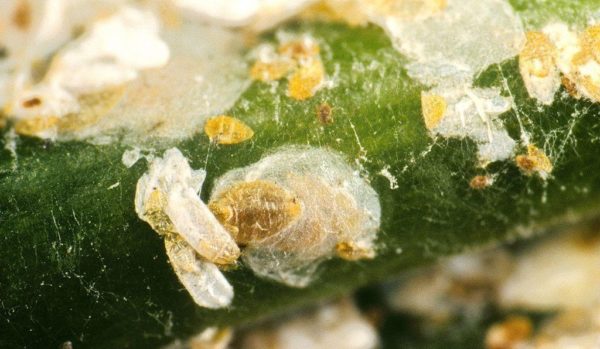
Let's talk about pests first. Arabis does not have so many:
- Clams. Their presence on the plant is indicated by holes in the leaves. Most often, mollusks appear on those plants that grow in areas with excess moisture.
- Caterpillars. These pests feed on the flesh of leaves and flowers, as well as shoots. To get rid of them will help timely loosening and mulching of the soil, as well as periodic weeding and watering.
- Cruciferous fleas. Most often they attack young plants, and it is in September and October. You can get rid of them only with the help of insecticidal drugs, such as kalbofos or actara.
As well as pests of arabis, snails and slugs can be attributed. You can get rid of them only manually, and to prevent their appearance is almost impossible.
Arabis is extremely resistant to various diseases, but there is one disease that even this plant can not resist. This disease is called "viral mosaic." The appearance of bright yellow flowers similar to buttercups testifies to this disease. The viral mosaic is not treated, so if it struck your arabis, you will have to dig it up and burn it.
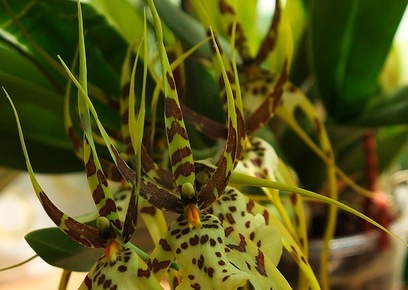 You may be interested in:
You may be interested in:Arabis transplant
Sometimes a long-term arabis needs to be transplanted to another place, then in addition to the question of leaving and landing, the question arises of how to transplant a casing. By the way, the photo below shows a variety of arabis called "Snow Cloud".
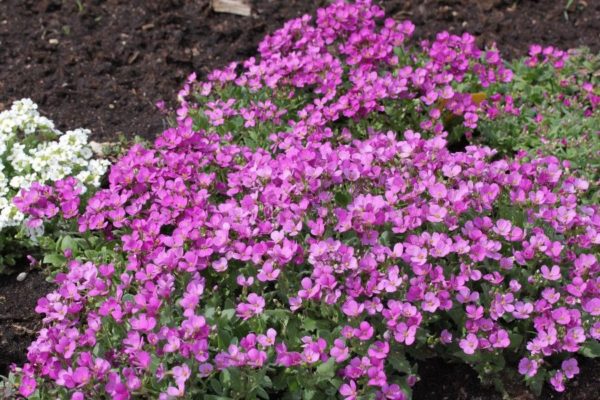
So, with regard to transplantation, it is important to remember that arabis has very thin roots that can easily damage, so it is better to transplant using the transplant method. Here is a detailed transplant instruction for this plant:
- We prepare the holes in advance with a depth of no more than 25 cm.
- Before transplanting, water the soil so that the soil is sufficiently moist.
- We loosen the soil near the arabis and gently pull it along with the earth from its former place.
- We transplant the casing into a new hole.
- We fill the plant with soil and slightly compact it.
- Water the plant again.
Seed harvesting
If you want to harvest arabis seeds yourself and plant them next season, then it is best to start harvesting at the end of summer. A big plus will be if the weather is dry and sunny on the day of harvesting.
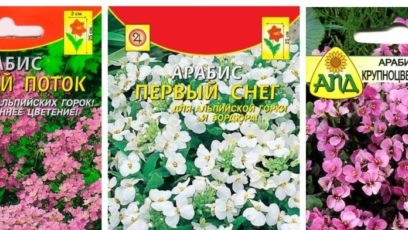
So, you need to cut off the inflorescences with peduncles and leave them on sheets of paper at a temperature of 21-23 degrees in a place where sunlight does not penetrate.
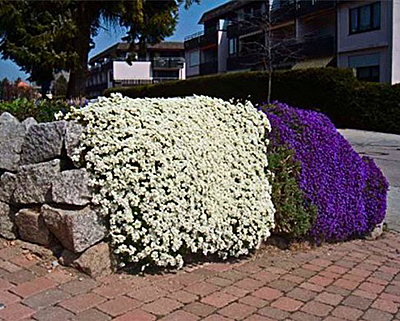 You may be interested in:
You may be interested in:Combination with other colors
Despite the fact that arabis itself is very beautiful, flower growers often supplement it with other plants. Thus, we get picturesque compositions that look quite impressive. So, the creeper is perfectly combined with the following plants:
- alyss;
- Shave
- bearded iris and its other species;
- young;
- tulips.
Perennial Arabis can even be used to decorate balconies. The main condition is that the balcony windows face the south.
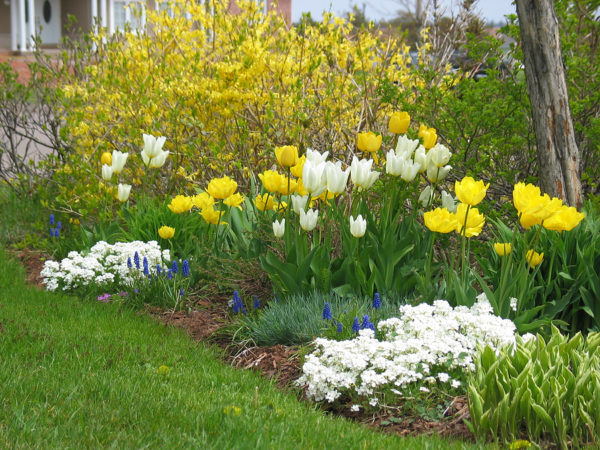
These were the basic rules for planting and caring for arabis perennial (including alpine), which will help to grow the same beautiful flowers on your plots with ease and without unnecessary trouble as in the photo.
